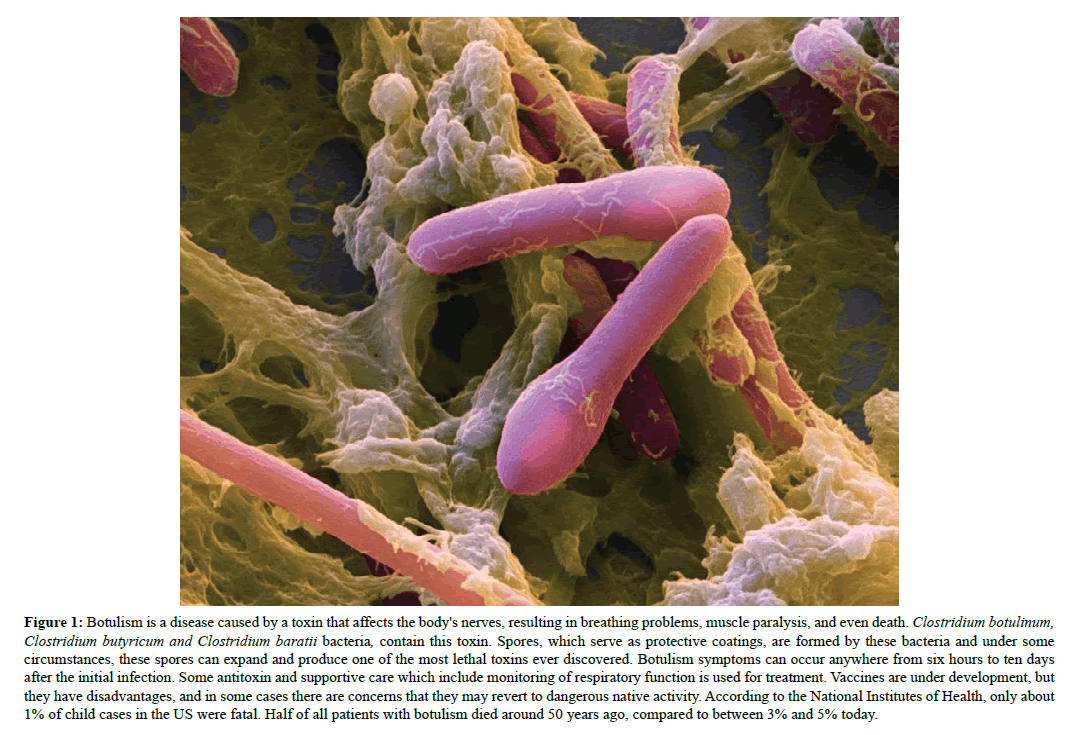ISSN : 2348-1927
Annals of Biological Sciences
An Overview: Botulism
Elizabeth William*
iMedPub, Green Lane, London, UK
- Corresponding Author:
- Elizabeth William
iMedPub, Green Lane, London, UK
E-mail: Elizwill_32@hotmail.com
Received Date: March 02, 2021, Accepted Date: March 08, 2021, Published Date: March 15, 2021
Figure 1: Botulism is a disease caused by a toxin that affects the body's nerves, resulting in breathing problems, muscle paralysis, and even death. Clostridium botulinum, Clostridium butyricum and Clostridium baratii bacteria, contain this toxin. Spores, which serve as protective coatings, are formed by these bacteria and under some circumstances, these spores can expand and produce one of the most lethal toxins ever discovered. Botulism symptoms can occur anywhere from six hours to ten days after the initial infection. Some antitoxin and supportive care which include monitoring of respiratory function is used for treatment. Vaccines are under development, but they have disadvantages, and in some cases there are concerns that they may revert to dangerous native activity. According to the National Institutes of Health, only about 1% of child cases in the US were fatal. Half of all patients with botulism died around 50 years ago, compared to between 3% and 5% today.
Open Access Journals
- Aquaculture & Veterinary Science
- Chemistry & Chemical Sciences
- Clinical Sciences
- Engineering
- General Science
- Genetics & Molecular Biology
- Health Care & Nursing
- Immunology & Microbiology
- Materials Science
- Mathematics & Physics
- Medical Sciences
- Neurology & Psychiatry
- Oncology & Cancer Science
- Pharmaceutical Sciences

